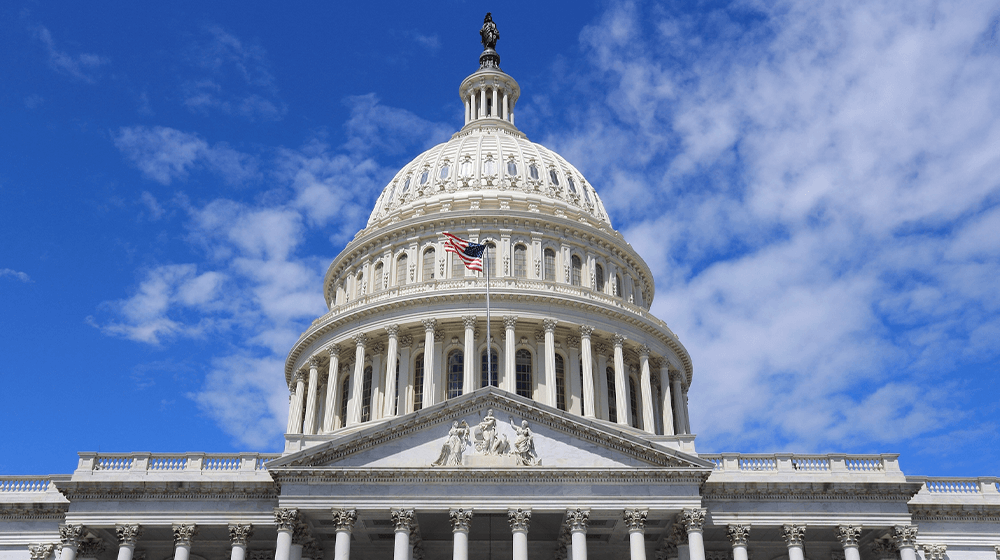- Three bills before the House of Representatives seek to make modifications to the Paycheck Protection Program
- Measures would allow more flexibility in PPP loan applications
- PPP has approximately $52 billion in funding left to disburse before a May 31 deadline
Summary by Dirk Langeveld
Three measures before Congress are looking to make revisions to the Paycheck Protection Program in the final weeks before it expires next month. Each proposal would allow greater flexibility in how applicants can calculate their loan amount, and all are currently being reviewed in committee.
The Economic Aid Act, passed in December, provided $284.5 billion for PPP loans while the American Rescue Plan added another $7.25 billion. The renewed program is directed at smaller employers and is open to both first-time applicants and businesses that previously received a PPP loan and suffered substantial revenue losses in 2020 due to the COVID-19 pandemic.
The program was originally set to expire on March 31, but Congress overwhelmingly approved an extension to May 31. The U.S. Small Business Administration has until June 30 to process applications to allow lenders to accept submissions closer to the deadline.
The legislative proposals come as the amount of money available for the forgivable loans gradually dwindles, raising the possibility that funds may be depleted before the deadline. The latest SBA update shows that $240.16 billion had been disbursed to 4.73 million borrowers as of April 18, leaving about $52 billion in available funding. However, the weekly pace of lending has slowed considerably in the past month, from $14.34 billion for the week ending March 21 to $7.36 billion in the most recent week.
The following PPP changes are being proposed:
Seasonal business assistance
Senators Susan Collins and Angus King of Maine have introduced a bill that seeks to expand PPP accessibility for certain seasonal businesses who found themselves shortchanged as the program’s rules changed.
Collins and King say that seasonal businesses that applied for a PPP loan when the program first opened in April 2020 had to calculate their loan amount based on the average monthly payroll in off-season months, which didn’t accurately reflect their increased summer staff and payrolls. The Treasury and SBA subsequently issued interim final rules allowing seasonal businesses to calculate their loans based on a 12-week period during the summer, and to increase their loans if the method resulted in a higher amount and the lender had not yet submitted paperwork to the SBA.
However, many seasonal businesses had already had their applications submitted by this point and were ineligible for an increased sum. The Economic Aid Act included a provision allowing seasonal businesses that had not yet received forgiveness on their first draw loan to use the newer seasonal calculation to increase their loan amount.
The proposal put forward by Collins and King would allow seasonal businesses that had already received forgiveness by this point to obtain this higher amount through an increase to a second draw loan.
Retroactive loan calculation formula
Rep. Ashley Hinton of Iowa, along with Reps. Abigail Davis Spanberger of Virgnia, Cynthia Axne of Iowa, and Troy Balderson of Ohio, are sponsoring legislation that would allow retroactive recalculation of PPP loans for farmers, ranchers, and self-employed small business owners.
The Biden administration previously enacted PPP changes to allow self-employed applicants to calculate their loan based on gross revenues. The previous method required them to use net revenues, which included several deductions that disqualified applicants or made them eligible for a tiny loan. The new method allows individuals to receive up to $20,833.
The revised calculation did not apply to businesses that had already submitted an application or received funding, so those who sought funding earlier still received a smaller sum. The legislation would allow these businesses to “retroactively recalculate to receive the full loan amount available, regardless of their previous loan status.”
Alternative revenue loss calculation
Balderson and Rep. Angie Craig of Minnesota are proposing a bill that would allow businesses to use an alternate method to determine eligibility based on revenue losses. Currently, second draw applicants must demonstrate that they experienced a decline in gross receipts of at least 25 percent in any quarter in 2020 compared to the same quarter in 2019 – a requirement the representatives say is too rigid.
The representatives say this comparison doesn’t accurately reflect how many businesses experienced their sharpest revenue declines within the 2020 calendar year. They say that government-mandated shutdowns were typically imposed in the middle of the second quarter, causing the most substantial losses between this quarter and the third quarter.
The legislation would allow businesses to qualify for a second draw loan if they can show a revenue loss of at least 25 percent between corresponding calendar quarters or between any consecutive 90-day period in 2020 when compared to the same period in 2019.








